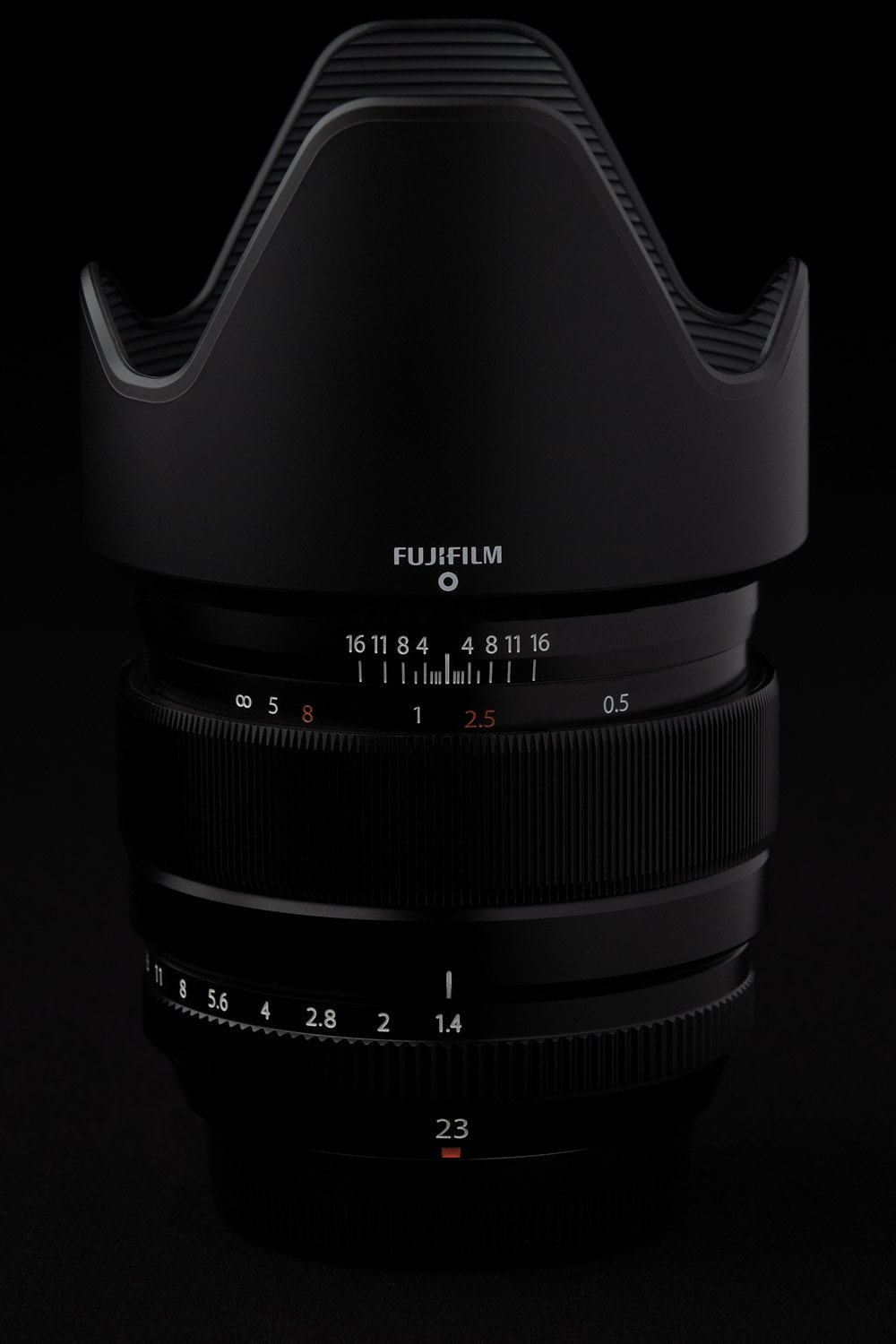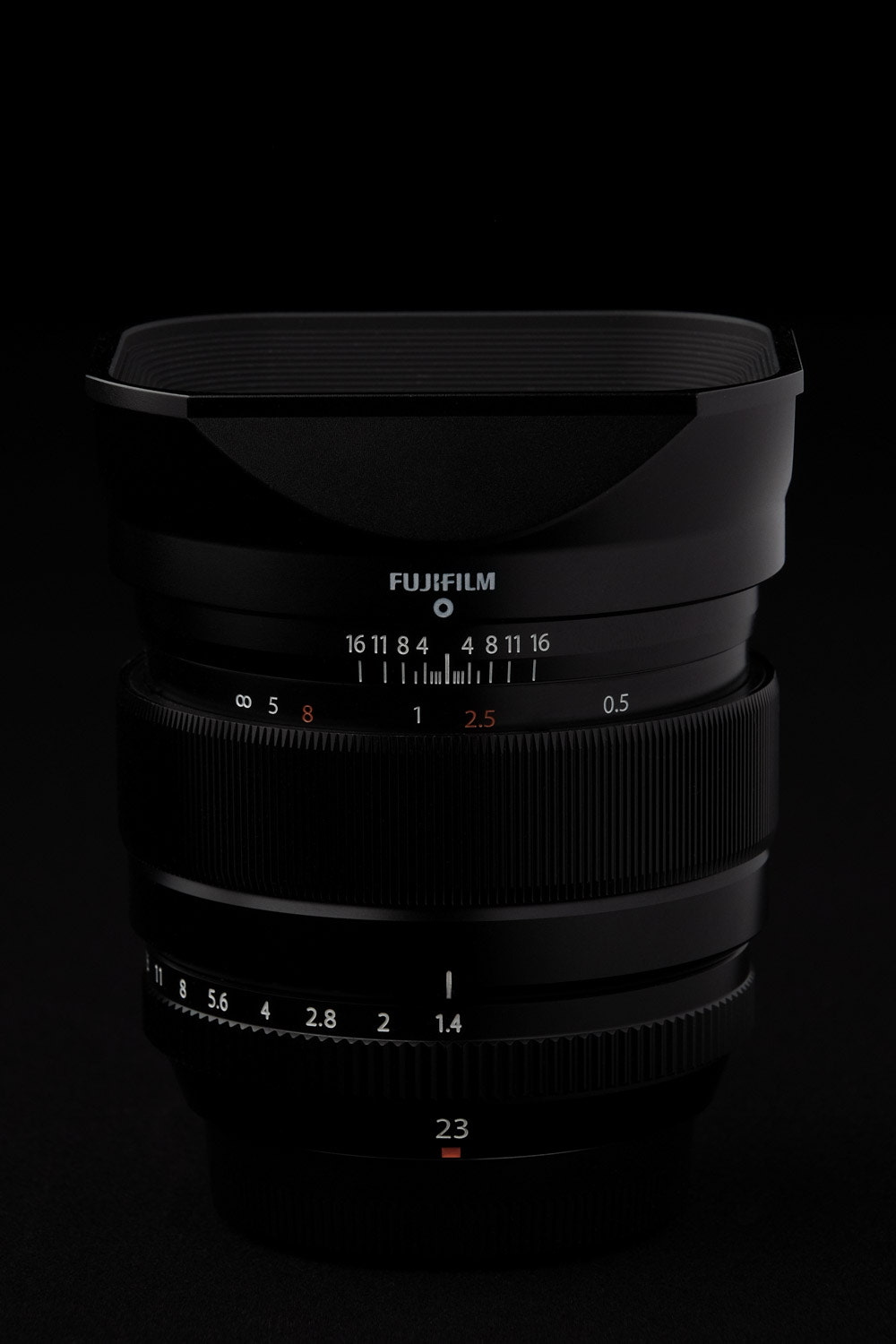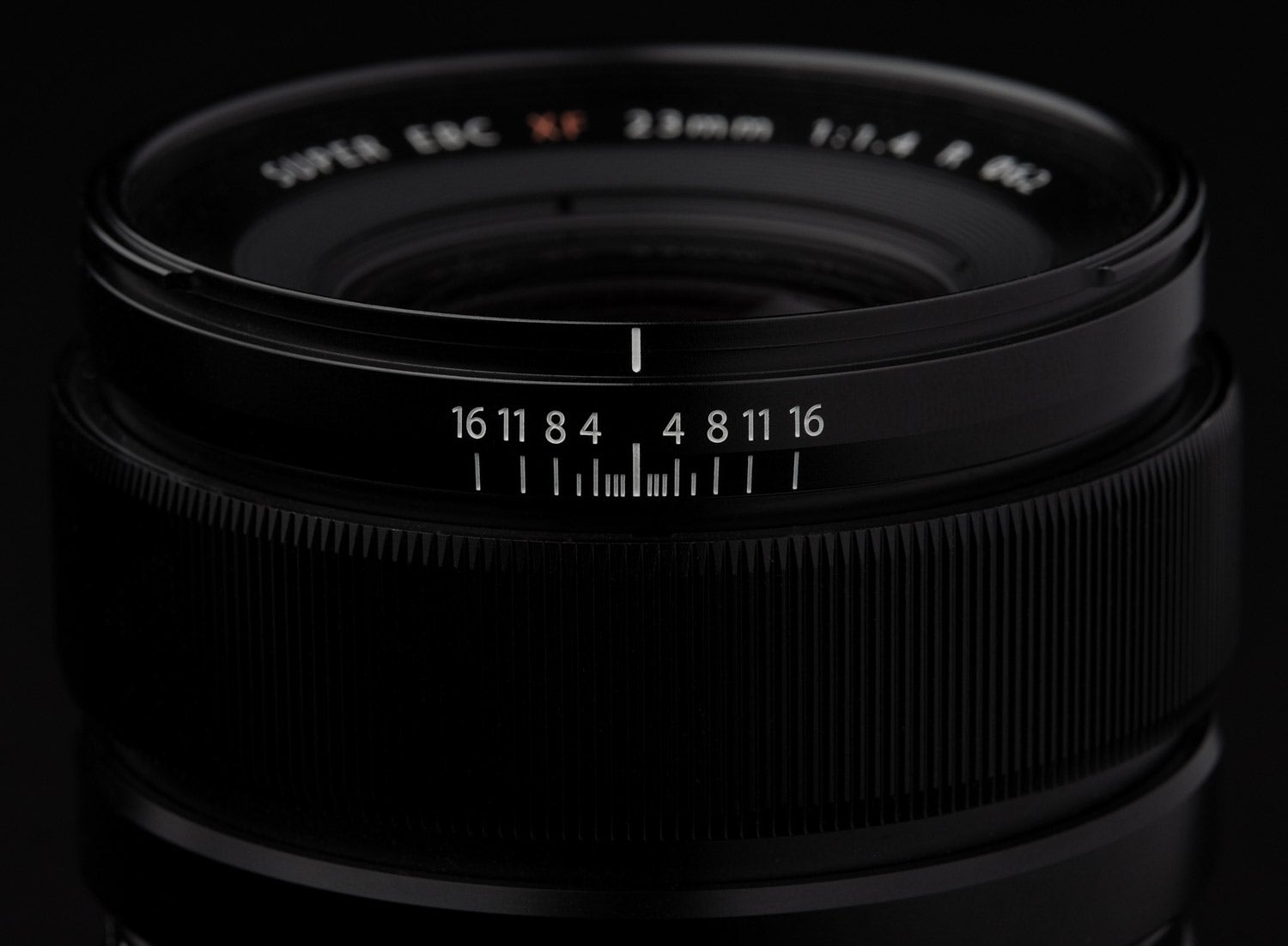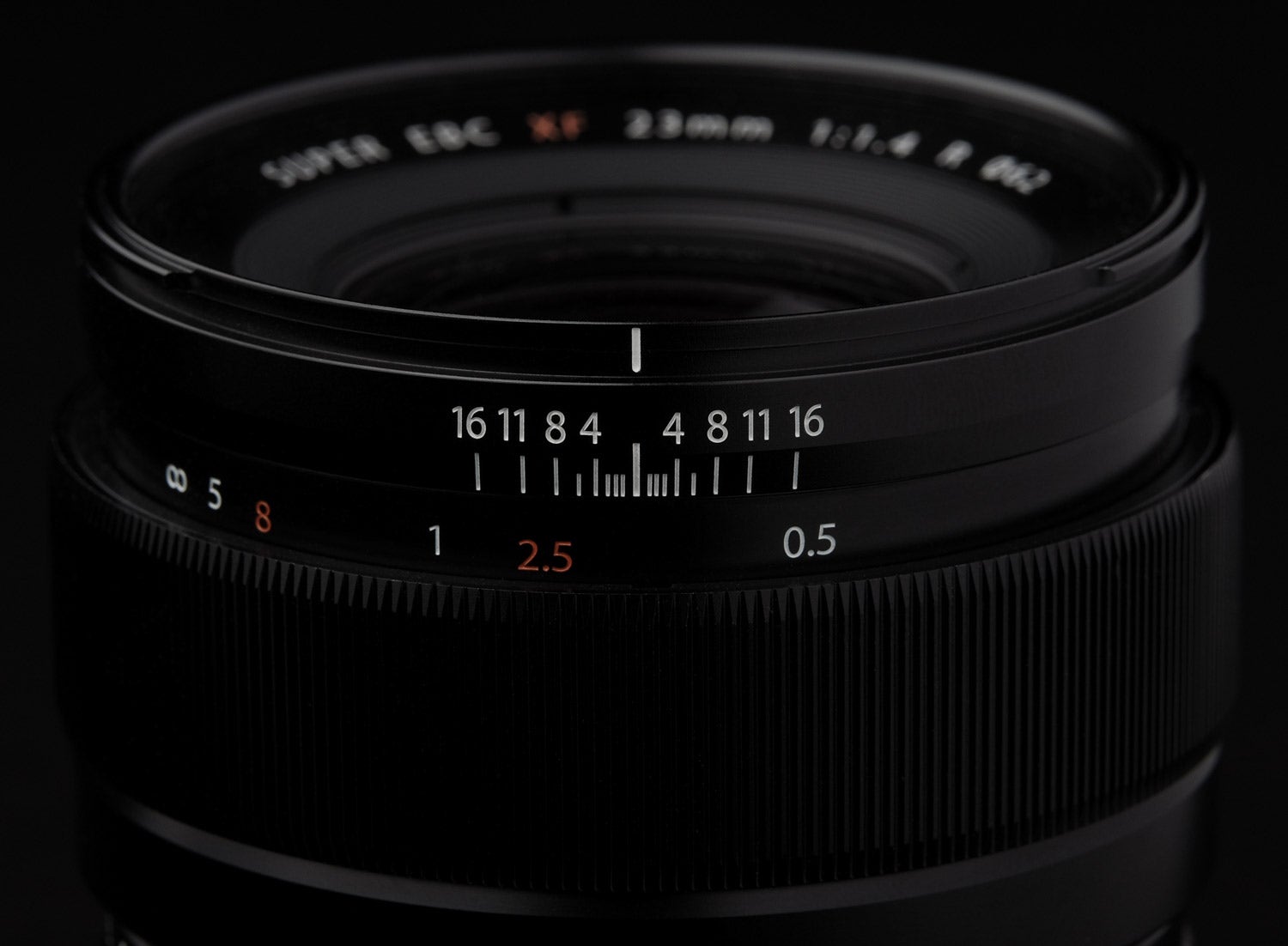Fuji vs. Fuji’s FUJINON XF 23mm F/1.4 Review
February, 2018: Originally published
June, 2020: Revised X100 considerations
Introduction
The FUJINON XF 23mm F1.4 has historically been one of the best lenses in Fuji’s line-up that many don’t even consider, and even fewer actually buy. There’s one very good reason that that, the X100. At around two thirds the price of a whole fixed-lens 35mm camera—a camera that is now weather sealed to boot—you have to really need that extra stop, sharpness, and/or more efficient access to manual focus.
Couple that with the new XF 23mm F2 WR—a lens that’s half the price—and the XF 23mm F1.4 is getting squeezed from both sides.
But I’m getting ahead of myself. The XF 23mm F1.4 is a fantastic piece of glass, and could still be worth considering for the Fuji shooter who already has an interchangeable body, and wants to add the best Fuji has to offer at a 35mm equivalent to their bag.
Specifications | |
| Lens Construction | 11 elements in 8 groups (1 aspherical) |
|---|---|
| Focal Length (35mm format equivalent) | 23mm (35mm) |
| Aperture Range | f/1.4 – f/16 in ⅓ stop increments |
| Aperture Type | 7 blades (rounded diaphragm opening) |
| Focus Range | Approximately 28cm - ∞ (infinity) |
| Maximum Magnification | 0.1× |
| External Dimensions | 72mm diameter × 63mm long |
| Weight | 297g 344.5g with caps and hood 375g w caps LH-XF23 accessory hood |
| Filter Size | ø62mm |
Features | |
| Weather Sealing (WR) | No |
| Optical Image Stabilization (OIS) | No |
| Focus Motor | Standard |
| Push/Pull Clutch Manual Focus Ring | Yes |
| Nano GI Coating | No |
| Fluorine Coating | No |
Handling
Build Quality
Pretty standard XF mount quality here. By the time this lens was released, we were still a ways away from peak build on a time scale, but I would say about 80% of the way in quality. This is not a lens you need worry much about sample variation in my experience.
I was quite pleased with the aperture ring found on the XF 23mm F1.4 initially, but almost every prime that has been released since has improved upon it slightly. A tighten here, and damp there. I don’t think many would be terribly disappointed with the aperture ring on the XF 23mm F1.4, but it could find its way out of the users setting without their knowledge, so it’s worth noting.
Size and Weight
When it was released it was on the larger end, but now it can be considered medium-sized for Fuji. In fact, it’s the smallest of every prime lens Fuji has released since with the inception of the F2WR lenses.
Optical Viewfinder
Without either hood, about a sixth of the frame is blocked by the lens. It’s on the side of usable, but barely. If you’re the type who keeps their hood glued to their lens, you’ll likely stick to EVFs.
Hood
The hood that comes in the box is plastic and enormous. So large that aside from testing, I don’t think I ever used it. A lot of photographers I know quickly went on the hunt for third-party replacement hoods to varying degrees of success at the time.
Accessory Hood
When Fuji announced that the XF 16mm F1.4 WR (Review) would have an aftermarket accessory hood, the first lens that came to mind as a candidate for its own fancy metal hood was the XF 23mm F1.4, followed closely by the XF 14mm F2.8 (Review). The former has indeed received it’s own metal hood in the LH-XF23→. We’re still waiting on the latter. It’s an excellent hood, but on my sample the plastic cap does not stay on the hood like it does on the LH-XF16→. It’s so loose I leave the cap at home. The accessory hood is also heavy. It’s about the same amount weight added as the XF 16mm F1.4 WR’s adds, but on a lens that’s nearly 80g lighter, so you’ll feel the difference a bit more. Still, I would take the weight over the size of the plastic hood in a heartbeat.
Third-party Hood
Vello offers their own LHF-XF23 Dedicated Lens Hood→ for the XF 23mm F1.4 that appears to be functionally identical to Fuji’s aftermarket option, and at a much lower price. Don’t mistake it for the LHF-XF23II→.
In general, this is a lens that really does not see much hood use. I’ve written many times before that I often like a little flare and ghosting in my images. You can probably get away with shielding the lens with your hand most of the time. I would recommend mostly keeping it small and leaving the hood at home. If you do want a shade, either one of the aftermarket hoods would be a more compact, discrete choice.
That’s a lot to say about hoods.
Manual Focus
Pull the manual focus ring in towards you and you’re focusing manually. I love this, but unfortunately there are just three lenses in Fuji’s lineup that offer it, with the XF 14mm F2.8 and XF 16mm F1.4 WR being the others. Some users might find the clutch ring an annoyance rather than a feature since it it can certainly get in the way of using the AF+MF setting that was released via firmware after the clutch ring came out. Overall, I would prefer consistency across the lens lineup, and the three lenses that do have the clutch focus ring are of such good quality they can’t be ignored.
Engraved Depth of Field Markings
Another feature restricted to just the XF14mm F2.8, XF16mm F1.4 WR and XF23mm F1.4. The more I use lenses with a proper depth of field scale, the more I miss them on lenses that don’t have them.
Weather Sealing
There is none, and that’s a real shame since it would have been a huge point of differentiation between it and an X100 prior to the X100V’s→ release. Now the lack or weather sealing makes the XF 23mm F1.4 an even tougher sell. It should be noted the XF 23mm F1.4 was released over a year before Fuji’s first weather sealed camera, the X-T1 was even announced.
Image Quality
Sharpness
The XF 23mm F1.4 is sharp. Not crazy sharp, but sharper than anything else I’ve used at 35mm from Fuji. X100 owners will see a jump in sharpness—although close focus at larger apertures are no longer an issue—as will XF 23mm F2 WR and zoom lens owners.
Expect some softness in the corners at the widest apertures. Things tighten up in all but the extreme corners up by f/2.8, and the whole frame is very good by f/4.
One thing to note, the XF 23mm F1.4 seems to have one of the fastest diffraction drop-offs of any Fuji prime. Between f/8 and f/11 the lens loses more sharpness than I find acceptable. Typically I’m comfortable shooting through the f/11 on Fuji lenses, but I would need a really good reason to go beyond f/8 when shooting RAFs. With JPEGs, Fuji sharpens images up in camera uncannily well. So well in fact you might think about adjusting the sharpening setting down, lest you end up with halos around high contrast areas.
Distortion
Distortion is so minimal, I had to double check that I had turned my lens profile off. This is one lens where Fuji’s in-camera correction can relax a little.
Bokeh
The contents of your background, and the distance from your subject will matter a lot when it comes to the bokeh of this lens. In some cases, the bokeh is just a lovely blur of colour, but if you have blades of grass, close to the background, or high contrast objects like bare trees against a bright sky, it can start to get a little messy or “nervous”. The samples below tell the story better than I can in writing.
Vignetting
Pronounced when shooting wide open in RAFs, but largely corrected in JPEGs, and negligible stopped down a couple times.
Flare
It’s just ok for me. The 7 blade aperture likely has a lot to do with that. I have a tough time getting decent sunstars with this lens, but I’ve seen good examples of it.
Aberrations
I see a minimal amount between f/1.4 and f/2.8. Virtually imperceptible by f/4, and all correctable in software.
Conclusion and Rating
The provisos mentioned in the introduction are compounded for me by the fact I don’t really get on all that well with 35mm. This is 100% a preference while shooting, as opposed to the output. I love 35mm photography as captured by other photographers, and I appreciate the focal length for environmental portraits, intimacy when used up close, etc. It’s just something I personally struggle with. It’s a focal length I do a lot of cropping in, or wishing was a little wider.
All that subjectivity aside, if 35mm is your preferred field of view, you can get by without weather sealing, and don’t might the added size and weight, or if you simply want shallow depth of field, it’s a lens that might be worth considering.
Then also consider the price, and that there is a smaller, weather sealed alternative at literally half the cost. Like the two 35mm lenses, you only lose one stop of light gathering. Unlike the 35mm, there’s a drop in image quality in my testing.
Finally, the X100. If the XF 23mm F1.4 was $100 less and included the metal hood, the X100 would be enough of an added expense that the prime would be easier to recommend over another whole camera. Now that the X100V offers weather sealing as well as improved optics, it’s even harder to give the XF 23mm F1.4 much more than a passing glance.
My money would go towards an X100 with zero hesitation.
Recommended with reservations.
If you’d like to purchase the XF 23mm F1.4, or anything else for that matter please consider using one of the affiliate links below. The price is the same for you, but a small percentage of the purchase price goes to me, which really helps keep this site going. Thank you.


























